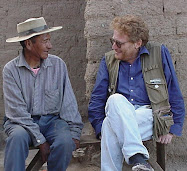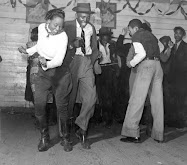skip to main |
skip to sidebar
La más antigua canción de la que se tiene registro: hace 3.400 años
Images from Ancient Times and Tablet Show:
EVIDENCE OF HARMONY
IN ANCIENT MUSIC
by Robert Fink
©1988, ©1997, Greenwich Publishing.
Updated Mar 2003
(Reprinted from Feb 1988 Archeologia Musicalis)
(Images required. If You're reading a web-archive copy, click URL note or caption (if any) near image area. Repeat for other images , if necessary.)
UPDATE: Two New Books on Music Origins & Music Archaeology
.
 No image? Click http://web.archive.org/http://www.greenwych.ca/harp1.gifThere are two major items of evidence: The oldest song, and ancient pictures of musicians:I. The Oldest Song in the World
No image? Click http://web.archive.org/http://www.greenwych.ca/harp1.gifThere are two major items of evidence: The oldest song, and ancient pictures of musicians:I. The Oldest Song in the World
For fifteen years Prof. Anne Draffkorn Kilmer puzzled over clay tablets relating to music including some excavated in Syria by French archaeologists in the early '50s. The tablets from the Syrian city of ancient Ugarit (modern Ras Shamra) were about 3400 years old, had markings called cuneiform signs in the hurrian language (with borrowed akkadian terms) that provided a form of musical notation. One of the texts formed a complete cult hymn and is the oldest preserved song with notation in the world. Finally in 1972, Kilmer, who is professor of Assyriology, University of California, and a curator at the Lowie Museum of Anthropology at Berkeley, developed an interpretation of the song based on her study of the notation (fig. 1).. The top parts were the words and the bottom half instructions for playing the music. Kilmer, working with colleagues Richard L. Crocker and Robert R. Brown produced a record and booklet about the song calledSounds From Silence. [Click score to hear a MIDI of the song.] For more information & another version MIDI by John Wheeler, click here:The song, it turns out, is in the equivalent of the diatonic "major" ("do, re, mi") scale. In addition, as Kilmer points out: "We are able to match the number of syllables in the text of the song with the number of notes indicated by the musical notations." This approach produces harmonies rather than a melody of single notes. The chances the number of syllables would match the notation numbers without intention are astronomical. [Note: The rhythm of the song is unknown.]No score image above? Click here.No MP3 above? Click here.MIDI version, click here.This evidence both the 7-note diatonic scale as well as harmony existed 3,400 years ago flies in the face of most musicologists' views that ancient harmony was virtually non-existent (or even impossible) and the scale only about as old as the Ancient Greeks, 2000 years ago. Said Crocker: "This has revolutionized the whole concept of the origin of western music.".
The top parts were the words and the bottom half instructions for playing the music. Kilmer, working with colleagues Richard L. Crocker and Robert R. Brown produced a record and booklet about the song calledSounds From Silence. [Click score to hear a MIDI of the song.] For more information & another version MIDI by John Wheeler, click here:The song, it turns out, is in the equivalent of the diatonic "major" ("do, re, mi") scale. In addition, as Kilmer points out: "We are able to match the number of syllables in the text of the song with the number of notes indicated by the musical notations." This approach produces harmonies rather than a melody of single notes. The chances the number of syllables would match the notation numbers without intention are astronomical. [Note: The rhythm of the song is unknown.]No score image above? Click here.No MP3 above? Click here.MIDI version, click here.This evidence both the 7-note diatonic scale as well as harmony existed 3,400 years ago flies in the face of most musicologists' views that ancient harmony was virtually non-existent (or even impossible) and the scale only about as old as the Ancient Greeks, 2000 years ago. Said Crocker: "This has revolutionized the whole concept of the origin of western music.".
Find Confirms Theory
.
My own interest comes from a book I wrote, The Origin of Music. which put forward the view that there is a natural foundation to the diatonic scale, that it has existed likely even from antiquity. In addition, the book espoused evidence showing that harmony, as well, existed in antiquity.Music of various cultures, taken over a long evolutionary period, show patterns emerge (despite other differences) such as the universal use of octaves, 4th and 5ths, and the similarities underpinning the various musical scales between cultures. These facts led to the theory.Thus, the oldest song known from a cuneiform document has provided major confirmation to this viewpoint. In turn, the theory may even now help to interpret the findings. Kilmer wrote: "I certainly do like and am profiting from The Origin of Music".
.
Why Do Scales, Keys and Harmony Exist?
.
At the earliest times in musical development, a sense for "melody" would not have occurred overnight. Prior to it, music often was the playing of single notes, assigned to various rituals, such as one gong for moon, another for sun, another for death, birth, etc., and played without much or any regard to their succession as musical melody of any sort. Scales might even be virtually non-existent as was harmony.What is harmony for? After all, a single tone is more "pure" than any combinations of tones or chords, which are cluttered with overtones that are usually dissonant with each other. Why did humanity bother to add, to the relatively clean single tone, "harmony" notes (and therefore, greater dissonance)?The answer is that harmony's function has evolved mostly to make the notes of melodies "connect" or to make their connection to each other melodically more apparent to the ear by making their common inner overtones audiblyexplicit in chords.It follows that harmony had no reason to exist among any people who are lacking scales. Scales are, historically, "congealed" or "generic" melody in the abstract.Once scales developed (especially a favoured two, major and minor), then we are looking at a people for whom connections between notes is very important. The agenda is whether melody is important enough for them to overlook the dissonant elements in chords (compared to their purer, more consonant single tones), so as to allow them to use chords in the enhancement of their melodies. Only after the full scale and melody develop first can harmony even begin to appear on this historical agenda.The oldest song dates this agenda far earlier in time and gives to the diatonic scale a near-universal status not formerly ascribed to it."Tonality", which is defined as a "loyalty to a keynote", is also exhibited in the oldest song by repeating phrases found at the end of sentences, usually on the same note as the keynote of the tune...II. Ancient Pictures Indicate Harmony
.
After correspondence with Kilmer, to review the whole notion of ancient uses of harmony, I looked back at my old music books and the replicas of ancient vases, drawings and bas-reliefs, which depicted ancient musicians and instruments. I noted evidence for harmony that virtually jumped out at me, yet oddly had escaped me, and apparently others, for years before now.Note the position of the hands in the harp pictures (Fig. 2 below and also at top of article. [Click top picture to return back here]):No Fig. 2 image below? Click here. The hands are on different strings. Could they be playing different notes at once? Another possibility is that while one hand is shown playing a note, the other hand has played, or is preparing to play, the next note -- which certainly is notevidence of ancient harmony. But this interpretation may be lacking:We must digress momentarily: when we look at transcriptions of most folk-music, at ancient records, it is almost invariable to find that music for voices proceeds mostly in a step-wise manner, with leaps of 4ths, 5ths or greater intervals infrequently used. This would be true especially in religious participatory primitive music in which the choruses and soloists could be expected to be mostly under-trained and unable to sing accurately the leaps to far notes.Now, here's the point: If the hands on the lyre were interpreted as being set, not to play two notes at once, but one waiting in preparation only for playing the next note in a usually step-wise melody, then the bulk of the illustrations from the past would show these anticipating fingers and hands waiting on the next string, or two strings later at most.But instead, many illustrations show wide gaps between hands (more than would be common if these were notes in a step-wise melody), hinting at the note movement, not of melodies, but of the wider intervals of harmonies. In the nearest hand, indeed, sometimes it seems almost certain that thumb and forefinger have likely already plucked, or will pluck two notes.There is more evidence in ancient Greek writings (Aristotle,Problems, Book XIX.l2.):
The hands are on different strings. Could they be playing different notes at once? Another possibility is that while one hand is shown playing a note, the other hand has played, or is preparing to play, the next note -- which certainly is notevidence of ancient harmony. But this interpretation may be lacking:We must digress momentarily: when we look at transcriptions of most folk-music, at ancient records, it is almost invariable to find that music for voices proceeds mostly in a step-wise manner, with leaps of 4ths, 5ths or greater intervals infrequently used. This would be true especially in religious participatory primitive music in which the choruses and soloists could be expected to be mostly under-trained and unable to sing accurately the leaps to far notes.Now, here's the point: If the hands on the lyre were interpreted as being set, not to play two notes at once, but one waiting in preparation only for playing the next note in a usually step-wise melody, then the bulk of the illustrations from the past would show these anticipating fingers and hands waiting on the next string, or two strings later at most.But instead, many illustrations show wide gaps between hands (more than would be common if these were notes in a step-wise melody), hinting at the note movement, not of melodies, but of the wider intervals of harmonies. In the nearest hand, indeed, sometimes it seems almost certain that thumb and forefinger have likely already plucked, or will pluck two notes.There is more evidence in ancient Greek writings (Aristotle,Problems, Book XIX.l2.):- "Why is it that lower of two strings always has the tune? If one omits the paramese when one should sound it with the mese, the tune is there none the less; but if one omits the mese when one should strike both the tune is missing...." (Emphasis added.)
The quote seems more than clear that two notes, and not just one at a time, were usually struck on the Kithara's strings.The Greeks and others had "double pipes" (aulos), sometimes one with holes, the second without. (Sometimes each had different sets of holes.) Both are shown in players' mouths at once. One, like bagpipes, played a drone (a keynote?); the other a melody. The harmonies must have been considered acceptable even then.Indeed, the usual concepts about ancient music are changing.
--Robert Fink
 ____________________________________________________________No image above? Click here.
____________________________________________________________No image above? Click here.
The recording, with a booklet and illustrations can be obtained from:
Janet Smith, Re: Sounds From Silence,
Bella Roma Music, 1442AWalnut St. #197 Berkeley, Calif., USA 94709.
The price at this writing is now $37.50 U.S.
Includes a CD and record, and extensive booklet. Shipping & Hndlg (U.S.) $5.oo
For other shipping costs or other update info, E-mail to:
Janet Smith, jcsmith8@pacbell.net Or Tel: (510) 841-80888
Copies of The Origin of Music -- An Essay,
are available from:
GREENWICH
1829 Arlington Ave., Saskatoon,
Saskatchewan,
Canada S7H 2Y9
TEL# (306) 244-0679 or 931-2189
for $20.oo (U.S.) postpaid.
Updated Mar 2003-- Two New Books on Music Origins & Music Archaeology
FOR CREDIT-CARD PURCHASES & RUSH DELIVERY SERVICE, click here
(Click on book title to return to place in text).
Click here to search our entire website
using your own keyword(s)
.
ALL MUSIC LYRICS: Search for lyrics, & other topics in a general music directory.
SEND E-MAIL:
In order for us to reduce getting spam from junk-mailer programs,
click on SEND E-MAIL, and then
before e-mailing us, remove the '+' symbol from our address
to make sure you reach us.
We are sorry for the inconvenience.
REQUEST FOR HELP FROM READERS ABOUT NEANDERTHAL FLUTE ESSAY: CLICK HERE
&java=1&security=&sc_random=0.8601481984369457&sc_snum=1)



























































No hay comentarios:
Publicar un comentario